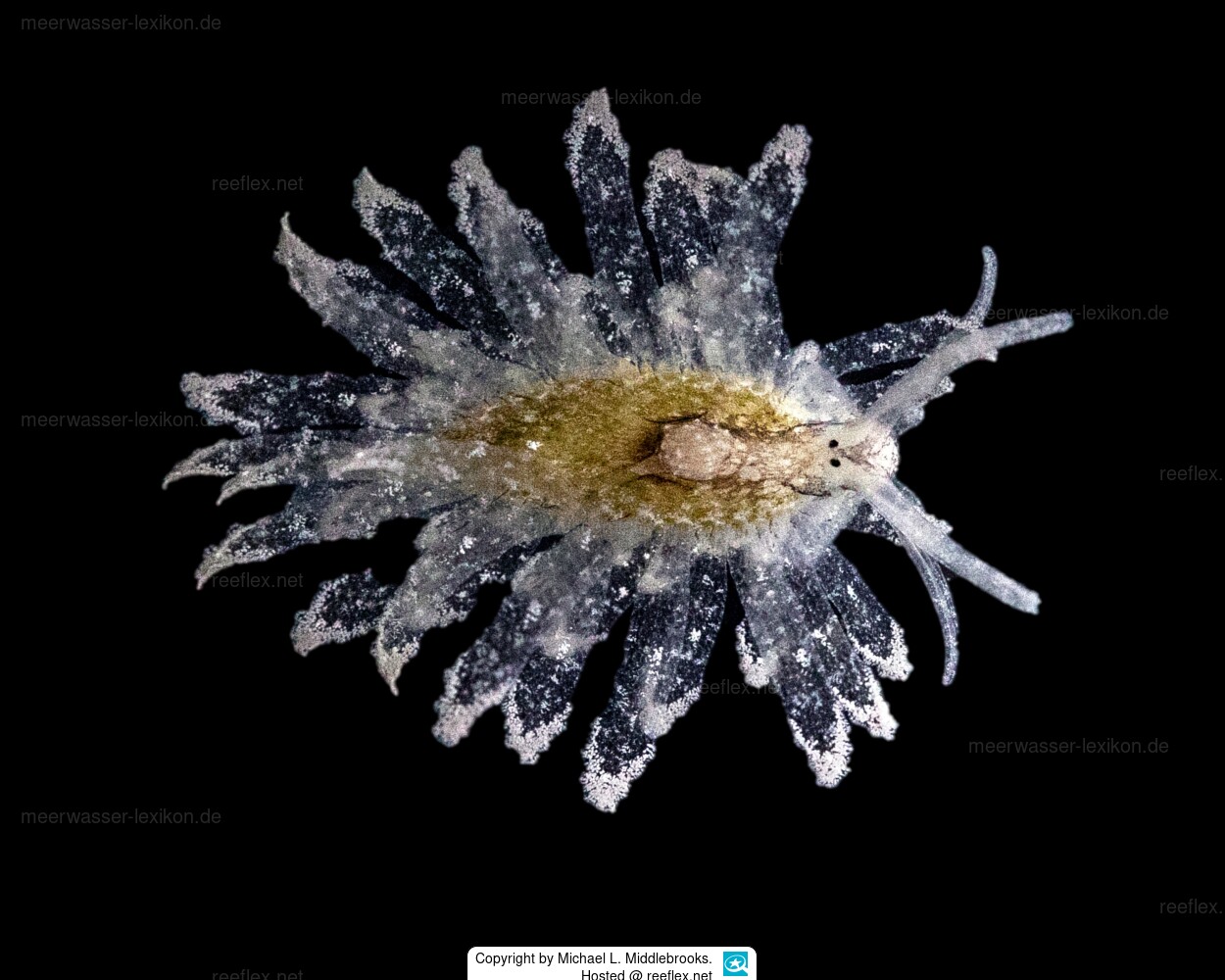Info
Cyerce Bergh, 1871 is a genus that currently includes 12 named species in the family Caliphyllidae. These lack the photosynthetic ability of other Sacoglossa, but are notable for the bright colors of the large cerata (leaf-like appendages on the back), which are characteristic of many species.
The species is found in the shallow waters of Tampa Bay, Florida.
The snail, which is often seen feeding on algae, is a striking animal with its gray-purple head and long, detachable appendages along its back.
Two species are commonly reported from the Caribbean: Cyerce cristallina (Trinchese, 1881) and Cyerce antillensis Engel, 1927.
External morphology:
The body color of Cyerce piercei is dark yellow mottled, the notum is brown mottled.
The head is white, with a Y-shaped wine-red spot that extends between the eyes to the front of the head and the base of the rhinophores.
The head has a maroon spot that extends behind the eyes to the area around the heart and along the sides of the head, as well as a dark purple line that borders the edge of the head.
The rhinophores and tentacles are smooth, translucent white, with faint maroon mottling.
Dr. Pierce is one of only a few researchers worldwide who was determined to understand how the snails manage to maintain the biochemical function of chloroplasts, a task for which the DNA of the algae would be required.
Cyerce piercei is planktotrophic, its food is Udotea looensis D .S. Littler & M. M. Littler, 1990
Etymology:
Named in honor of Sidney (“Skip”) K. Pierce, in recognition of his distinguished career, including his seminal contributions to the study of sacoglossan kleptoplasty, and for his support of our work. Dr. Pierce was a long-time Tampa Bay field researcher, served as a mentor to M.M., and provided P.J.K. with his first specimen of this species >15 years ago.
Special thanks to Dr. Patrick Joseph Krug and Dr. Michael Middlebrooks for the first photo of this species.
The species is found in the shallow waters of Tampa Bay, Florida.
The snail, which is often seen feeding on algae, is a striking animal with its gray-purple head and long, detachable appendages along its back.
Two species are commonly reported from the Caribbean: Cyerce cristallina (Trinchese, 1881) and Cyerce antillensis Engel, 1927.
External morphology:
The body color of Cyerce piercei is dark yellow mottled, the notum is brown mottled.
The head is white, with a Y-shaped wine-red spot that extends between the eyes to the front of the head and the base of the rhinophores.
The head has a maroon spot that extends behind the eyes to the area around the heart and along the sides of the head, as well as a dark purple line that borders the edge of the head.
The rhinophores and tentacles are smooth, translucent white, with faint maroon mottling.
Dr. Pierce is one of only a few researchers worldwide who was determined to understand how the snails manage to maintain the biochemical function of chloroplasts, a task for which the DNA of the algae would be required.
Cyerce piercei is planktotrophic, its food is Udotea looensis D .S. Littler & M. M. Littler, 1990
Etymology:
Named in honor of Sidney (“Skip”) K. Pierce, in recognition of his distinguished career, including his seminal contributions to the study of sacoglossan kleptoplasty, and for his support of our work. Dr. Pierce was a long-time Tampa Bay field researcher, served as a mentor to M.M., and provided P.J.K. with his first specimen of this species >15 years ago.
Special thanks to Dr. Patrick Joseph Krug and Dr. Michael Middlebrooks for the first photo of this species.







 Dr. Michael L. Middlebrooks, USA
Dr. Michael L. Middlebrooks, USA
















